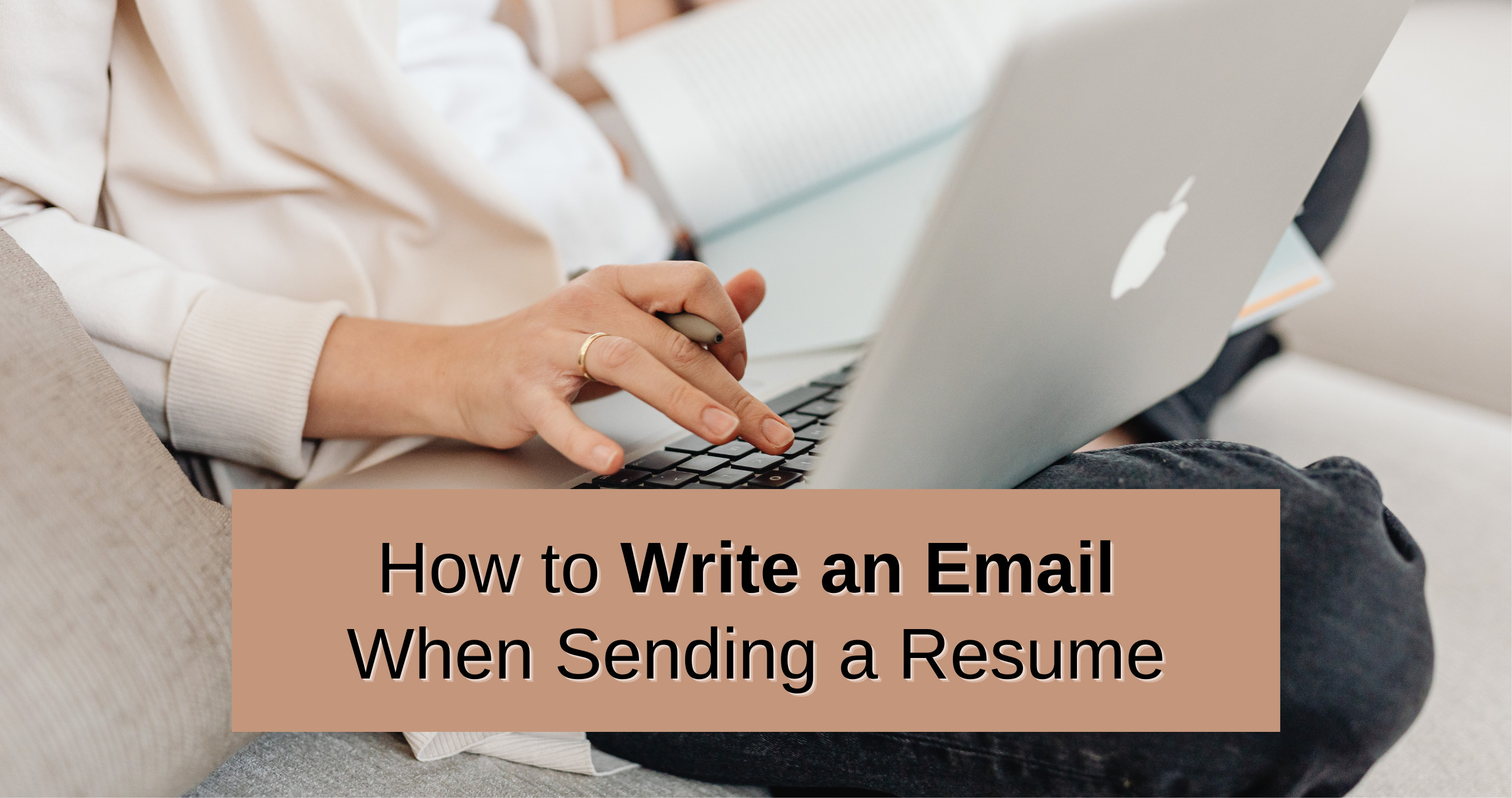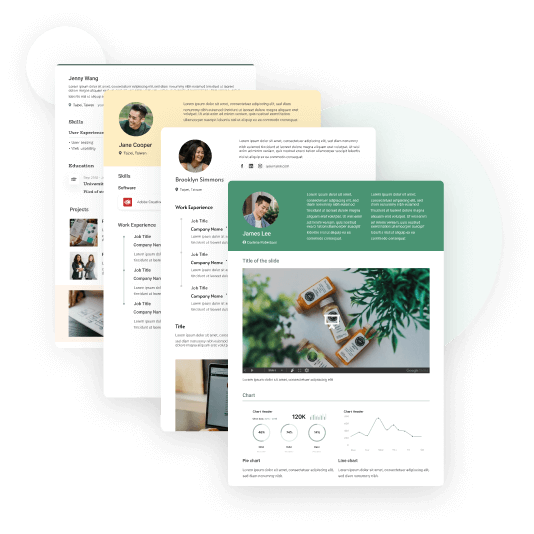A Guide to Different Types of Resume Formats [+ Examples]
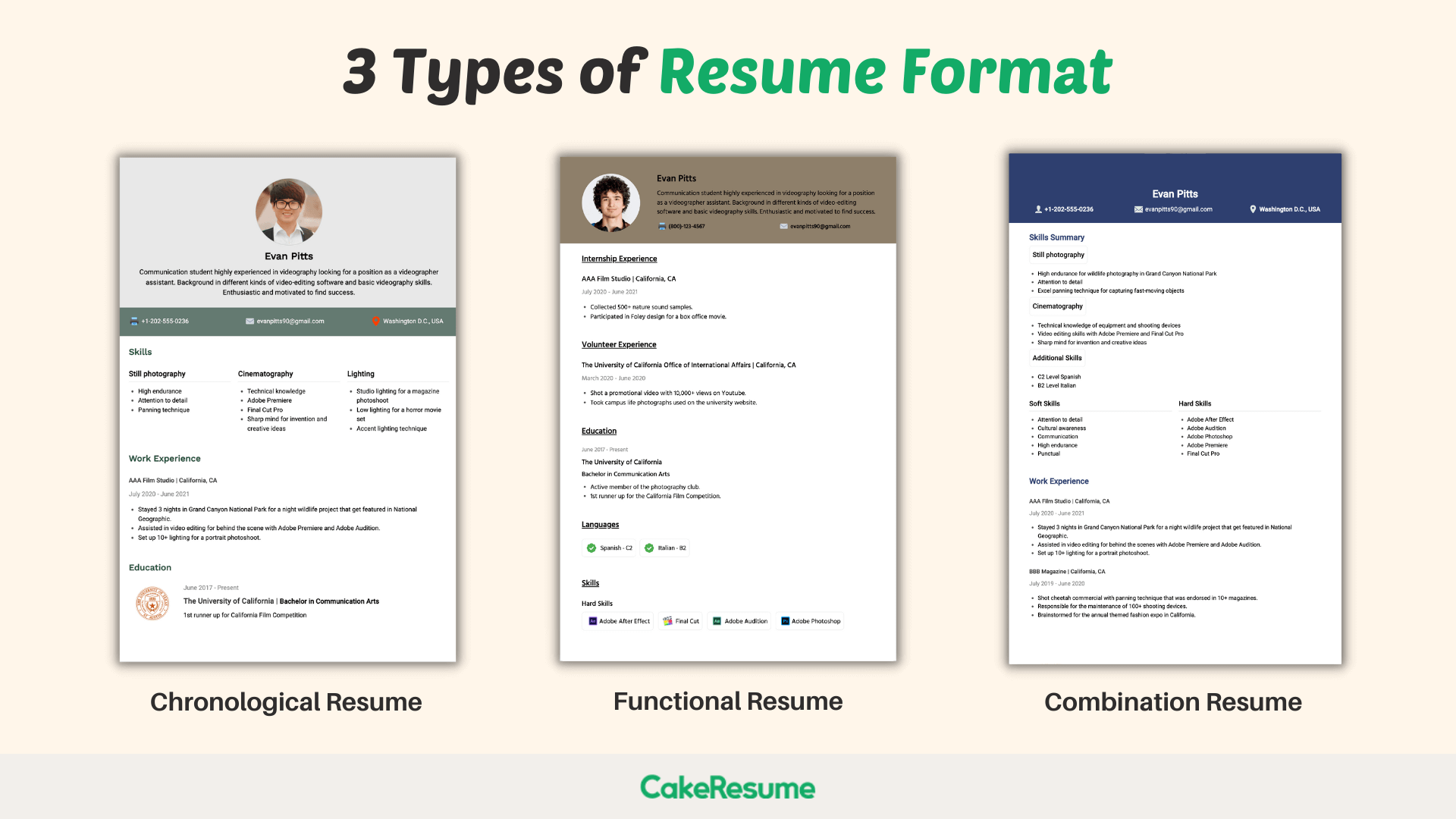
The right type of resume will land you in the right place. In this competitive world, tons of resumes arrive on the recruiters’ desks every hiring season, and you might not want your resume to end up in the piles. To boost job application success and get offered your dream job, the very first fundamental step is to choose which types of resumes suit you the best.
Generally, there are 3 types of resume formats that are highly recommended to use nowadays:
- Chronological resume format (reverse-chronological resume)
- Functional resume format
- Combination resume format
In some cases, you might also want to opt for another kind of resume that is specifically tailored for different professions and situations. But first, let’s take a look at the most commonly used resume format that might become the stepping stones to your desired job.
Table of Contents:
3 Common Types of Resume Formats
3 types of resume formats that are most commonly used:
1. Chronological Resume Format
The chronological resume format is one of the most common types of resume among the three types of resume. It emphasizes its reverse-chronological feature that lists work experience from the latest to the oldest.
This type of resume format helps recruiters to understand the applicants, and what they have been doing in the previous line of work. The chronological resume format is suitable for those with progressive work histories and those that applying for a company that utilizes Applicant Tracking System as their screening procedure.
Depending on the background and qualification of the applicant, this type of resume also comes with some pros and cons.
Pros:
- The most preferred resume format by recruiters
- ATS-friendly resume format
- Clearly shows working histories and progress
Cons:
- Not a good choice for those who have a gap in their working history
- It will be obvious if you have a rough career progress
Chronological (reverse-chronological) resume format should include:
- Contact Information
Basic information such as:- Name
- Email address
- Contact number
- Address (optional)
- LinkedIn (optional)
- Personal website (optional)
- Objective/Summary Statement
The objective/summary statement will give a professional touch on the resume. It often includes brief information that states out your qualifications and suitability for that specific job. - Work Experience
Here is where you elaborate on the work experience in a reverse-chronological format. You could list out your previous working experience from the latest to the oldest. - Education
Education is also essential especially if you graduated from a well-known institution or with a degree that is highly correlated with the specific job opening. - Additional information
Additional information such as skills, hobbies, certifications could be helpful. Not only could it let the recruiters have more clarity on the applicants, but some of the additional information might have a plus point.
💡Pro tip: Include only experiences that are relevant to the job description. You could also include bullet points on your achievements and qualifications during that specific career.
2. Functional Resume Format
The functional resume format is a skill-based resume format that focuses more on elaborating skill sets rather than on a progressive career history. This type of resume is best used to show your transferable skills to the recruiter. It is also very suitable for those who lack relevant working experiences but possess certain qualifications that are needed in the job description.
Pros:
- Hides gap years and unstable career history
- Emphasize career expertise and skills
- Best type of resume for a career change
Cons:
- Not an ATS-friendly type of resume
- Might possibly alert the recruiters of your previous working experience
- A considerable amount of relevant skills are required
A functional resume format usually includes:
- Contact Information
Basic information such as:- Name
- Email address
- Contact number
- Address (optional)
- LinkedIn (optional)
- Personal website (optional)
- Objective/Summary Statement
If you are a fresh graduate, it would be helpful to provide a brief positive objective summary on the top of your resume. It could show the recruiter that you are serious and motivated in getting the job position. - Skills
In functional resume examples, the skills section often comes before the work experience section. In this section, applicants should include any transferable skills from previous careers or any skill sets that were acquired back in college, internships, or volunteering activities. - Work Experience
Work experience will be a plus point if applicants have any working experience that could support the chance of getting the job opportunity - Education
Here, you could include the name of the affiliated institution along with the academic focus. Other information such as the school activities, clubs, or rewards could be included.
3. Combination (Hybrid) Resume Format
This kind of resume is a combination of chronological and functional resume format. This type of resume begins with an overview of the skills section which is supported with related working experiences in a reverse-chronological format.
The combination resume requires a certain amount of qualifications and work experience, which is why this resume format might seem fancier and is only made for those with abundant skills and career histories.
Pros:
- Shows professional and strong working qualifications and experiences
- Perfect for career changers with rich working experience
Cons:
- Not an ATS-friendly resume format
- Takes a longer time to read
- Prone to repeat certain skills/ work experience
A combination resume format should include:
- Contact Information
Basic information such as:- Name
- Email address
- Contact number
- LinkedIn (optional)
- Address (optional)
- Skills Summary
Here you could provide a paragraph of what you have achieved with those specific skills and how they could be useful for the current position. It is best to show some correlation between the skills and previous working experience. - Additional Skills
Here you can list any additional skills that you have left out in the previous section. Remember to include both soft skills and hard skills in the resume. It would be best to go through the job description so that you could cover most of the requirements made by the company. - Work Experience
Here you could include previous working experiences that support the skills sets you have mentioned in the skills section. You could include the specific scenarios of where and what you have achieved with those specific skills. - Education
The education section might not be the spotlight here with the abundant amount of skills and working experiences. However, it could provide some positive points if the applicant has some relevant background or graduated from some prestigious institution. Even if you do not have a relevant degree, you could still show the recruiters the skills and abilities that are highly transferable and would be a great addition to the company.
Other Alternative Resume Types
It would be safe to say that with careful consideration and selection, the three types of resumes mentioned in the previous section might be the best type of resume that will land you the best job.
Nevertheless, there are also other different types of resume formats that you could consider:
1. Infographic Resume
Just like the name, this type of resume focuses on graphics to cover all of the information. It could be expressed in the form of icons, bar charts, or even timelines.
Please bear in mind that an infographic resume type might not really be up for the ATS game. However, for those applicants with some background in art and design, this type of resume format might really do the trick. Applicants could show their skills and creativity while they are selling themselves in this resume format. Just remember to keep it easy to read and organized.
2. Resume with Profile
A resume with a profile is the type of resume that has a short paragraph of profile description on the top of the resume.
Profile in a resume usually includes information such as:
- Notable achievements
- Skills
- Years of experience
A resume profile, if crafted wisely, could be very appealing to job recruiters. Applicants who have a pretty strong relevant background and are looking for a better position with similar experiences could include a killing profile that will catch the hiring manager’s attention.
3. Targeted Resume
A targeted resume is the kind of resume that is specifically tailored for a certain job opening. In other words, the content of your resume should be adjusted according to the requirements in the job description.
Needless to say, a great targeted resume should:
- Include the keywords mentioned in the job description
- Include certain skills that are highly relevant to the job
- Remember to adjust the job responsibilities contents into those that match with the job position
A targeted resume is suitable for those who have abundant work experiences in the same expertise and would like to have a more focused and specific description that might be in line with the job description they are applying for.
4. Nontraditional Resume
A nontraditional resume format is popular among people working in the creative industries. This type of resume depends on some pictures, graphs, and visual presentations to convey the information.
If you choose to use a nontraditional resume format, it would be best to:
- Consider the field of expertise you are applying for
- Match with the requirements mentioned in the job description
- Always keep a traditional resume as a backup
5. Mini Resume
The mini resume has begun to earn its place in modern society. This resume type is different from the formal traditional types of resumes and is relatively small in size. This is why a mini resume is popular among those who often go to networking events since they can easily leave their information to other people along with their name cards.
A mini resume often includes information such as contact information and career highlights.
8 Tips on How to Format a Resume Correctly
1. Use adequate margins
Recommended margins on each side of the resume should be about 1 inch and no less than 0.5 inches. A margin that is too narrow will make the resume look very crowded and hard to read.
2. Use professional, readable font type and size
Please do not use more than one font type in one resume. The most commonly used font types are Helvetica, Roboto, Calibri, Open Sans, etc. The recommended font size is 16pt for the header, 14pt for the section title, and 12pt for the content. Good use of font size ratio will make the whole resume more classified and professional.
3. Use consistent spacing
The key to an organized and easy-to-read resume format is to have consistent spacing throughout the entire resume. Consistent spacing will not only make your resume look tidy, but it could also allow the eyes to easily attain pieces of information.
4. Use resume section headers
Giving attributes to each section in a resume will make it more formulated and classified. You could include section headers such as the objective, work experience, education, skills, etc.
5. Use bullet points for listing
Bullet points make it easier for the recruiter to get through the information they are looking for. So if you have any additional information to add to the resume such as the previous job description and achievements, then bullet points are your best choice.
6. Use consistent formatting for details like dates
You might want to make up your mind what kind of date format you would like to use in the resume. If you have your date formatting that starts with month then year, then you should keep the same formatting for the entire date. Likewise, if the date format is bold or italic, keep them in bold or italic consistently.
7. Keep your resume 1-2 pages long
A professional resume should be around 1-2 pages long. A resume should be specifically targeted to a specific job opening. Please only select the information that is highly relevant to the description. A CV will be a great choice for you if you have more details to say to the recruiters.
8. Use the proper file format
It is suggested to convert your resume into a PDF file so that the formatting will stay the same. Other types of files can be more challenging to pass through ATS screening. Therefore, if the company you are applying to uses ATS for screening, you should submit your resume in PDF format, unless you are specifically instructed to use other file formats.
Different Resume Types Examples
After understanding different types of resume formats and their application, here are some resume templates and samples for chronological resume format, functional resume format, and combination resume format.
1. Chronological Resume Example for Students
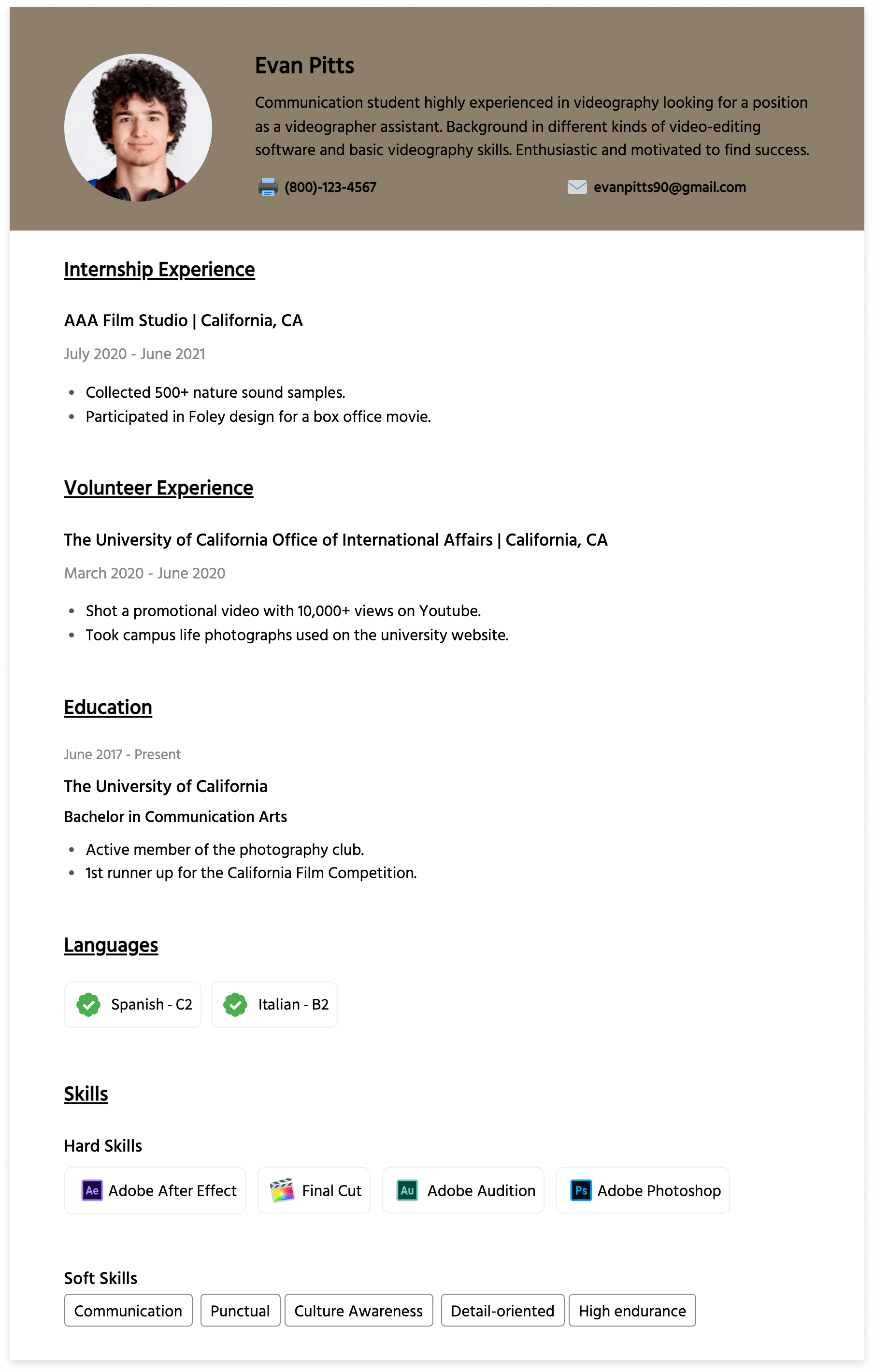
2. Functional Resume Example

3. Combination Resume Example
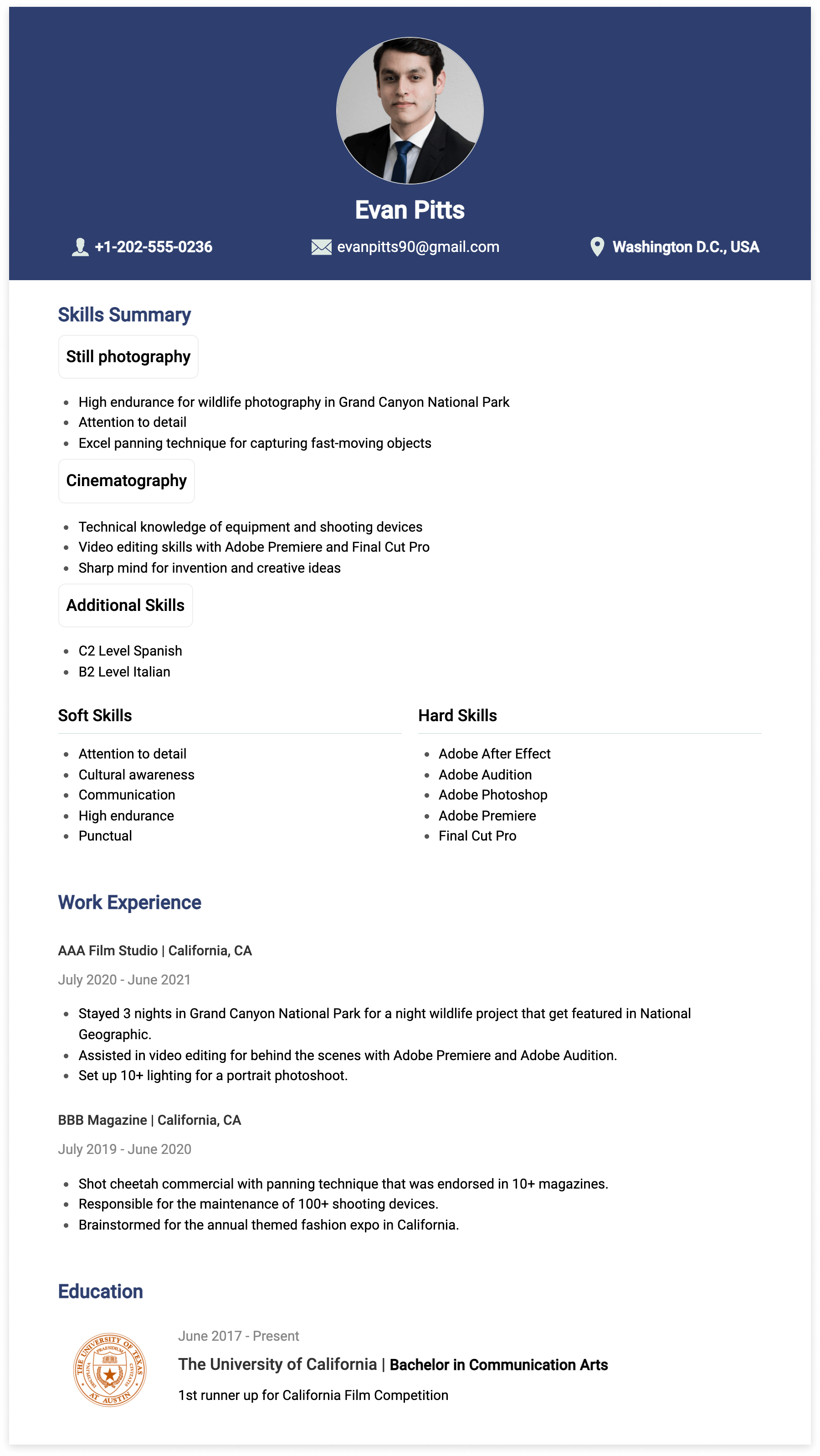
With CakeResume’s resume builder tool, resume templates and resume examples, you could showcase your best qualifications to land your dream job. Try making a resume online (free download) now!
--- Originally written by Fedrik Hansen ---
More Career and Recruitment Resources
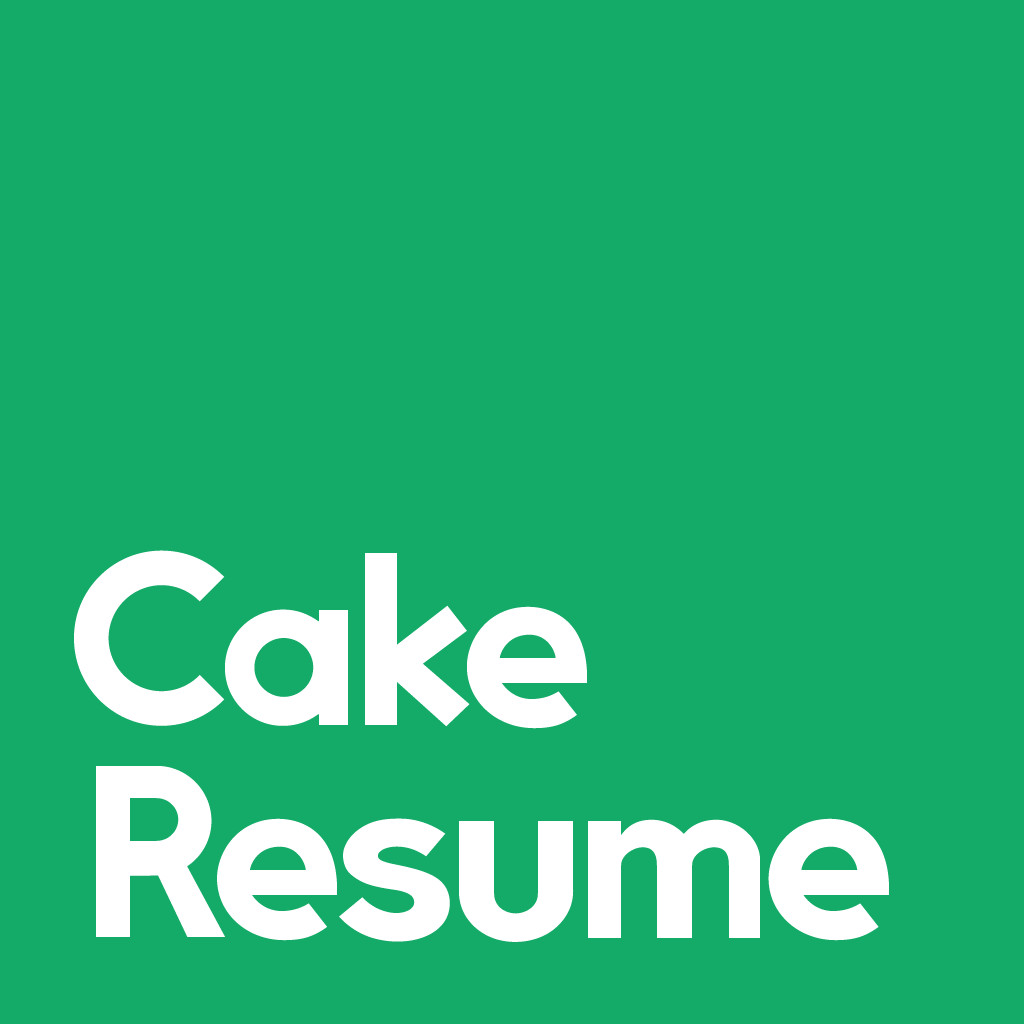
With the intention of helping job seekers to fully display their value, CakeResume creates an accessible free resume/CV/biodata builder, for users to build highly-customized resumes. Having a compelling resume is just like a piece of cake!
